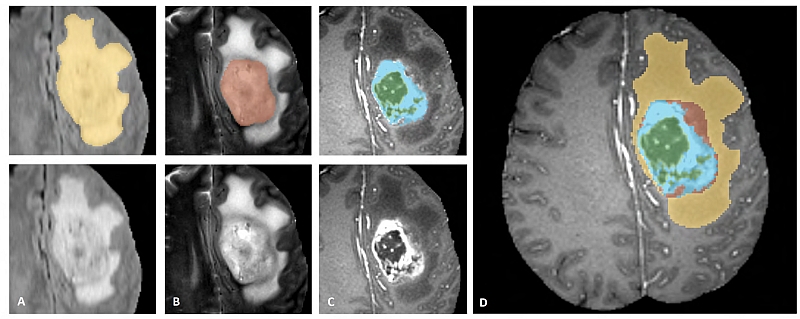Multimodal Brain Tumor Segmentation Challenge 2018
 • Scope • Relevance • Tasks • Data • Evaluation • Participation Summary • Data Request • Previous BraTS • People •
• Scope • Relevance • Tasks • Data • Evaluation • Participation Summary • Data Request • Previous BraTS • People •
Scope
BraTS has always been focusing on the evaluation of state-of-the-art methods for the segmentation of brain tumors in multimodal magnetic resonance imaging (MRI) scans. BraTS 2018 utilizes multi-institutional pre-operative MRI scans and focuses on the segmentation of intrinsically heterogeneous (in appearance, shape, and histology) brain tumors, namely gliomas. Furthemore, to pinpoint the clinical relevance of this segmentation task, BraTS’18 also focuses on the prediction of patient overall survival, via integrative analyses of radiomic features and machine learning algorithms.
|
IMPORTANT DATES:
|
View the arXiv version of the manuscript summarizing BraTS 2018 |
BraTS 2018 runs in conjunction with the MICCAI 2018 conference, on Sep.16, as part of the full-day BrainLes Workshop.
The 3 top-ranked participating teams of each task of BraTS 2018, will be receiving monetary prizes of total value of $5,000 — sponsored by Intel AI. |
 |
Feel free to send any communication related to the BraTS challenge in brats2018@cbica.upenn.edu.

